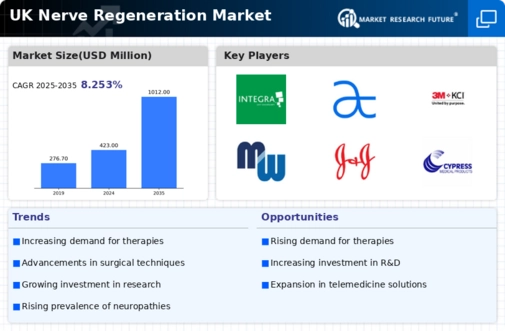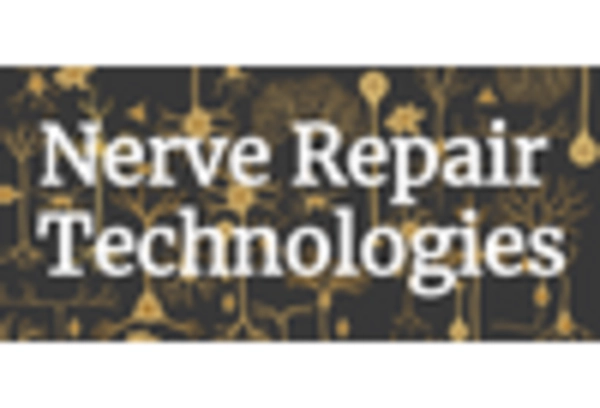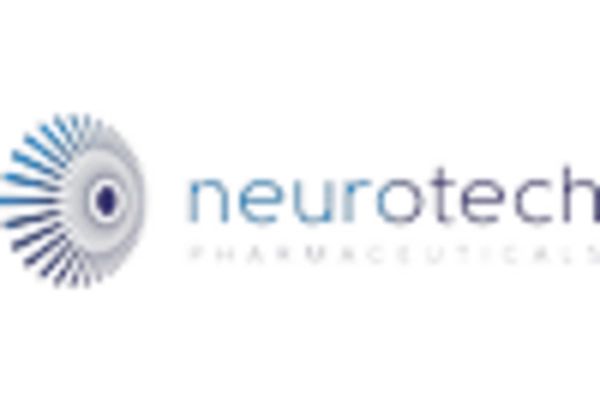Aging Population
The aging population in the UK is a significant factor driving the nerve regeneration market. As individuals age, the risk of developing neurological conditions increases, leading to a greater need for effective nerve repair solutions. The Office for National Statistics reports that the proportion of individuals aged 65 and over is projected to rise to 23% by 2035. This demographic shift is likely to create a larger patient base for nerve regeneration therapies. Consequently, the nerve regeneration market is expected to expand as healthcare providers adapt to the needs of an older population, focusing on innovative treatments that enhance quality of life.
Advancements in Biomaterials
The development of advanced biomaterials is significantly influencing the nerve regeneration market. Innovations in materials science have led to the creation of biocompatible and biodegradable scaffolds that support nerve growth and repair. These materials are designed to mimic the natural extracellular matrix, facilitating cellular interactions and promoting regeneration. The UK has seen a surge in research focused on these biomaterials, with funding from both public and private sectors. As a result, the nerve regeneration market is expected to expand, with an estimated growth rate of around 15% annually over the next five years, driven by the increasing adoption of these advanced materials in clinical applications.
Government Initiatives and Funding
Government initiatives aimed at enhancing healthcare infrastructure and funding for neurological research are pivotal in shaping the nerve regeneration market. The UK government has allocated substantial resources to support research and development in regenerative medicine, which includes nerve regeneration. This financial backing is crucial for fostering innovation and facilitating clinical trials. The nerve regeneration market benefits from these initiatives, as they not only provide necessary funding but also encourage collaboration between academic institutions and industry players. As a result, the market is likely to experience accelerated growth, with an emphasis on translating research findings into practical therapies.
Increased Focus on Personalized Medicine
The trend towards personalized medicine is reshaping the nerve regeneration market. Tailoring treatments to individual patient profiles enhances the efficacy of therapies and improves outcomes. In the UK, there is a growing emphasis on understanding genetic and environmental factors that influence nerve regeneration. This shift is prompting researchers and clinicians to develop customized approaches to treatment, which may include gene therapy and targeted drug delivery systems. The nerve regeneration market is likely to benefit from this trend, as personalized therapies are expected to gain traction, potentially leading to improved patient satisfaction and better overall results.
Rising Incidence of Neurological Disorders
The increasing prevalence of neurological disorders in the UK is a primary driver for the nerve regeneration market. Conditions such as multiple sclerosis, Parkinson's disease, and traumatic brain injuries are becoming more common, leading to a heightened demand for effective treatment options. According to recent statistics, neurological disorders affect approximately 1 in 6 individuals in the UK, which translates to millions of patients requiring innovative therapies. This growing patient population necessitates advancements in nerve regeneration technologies, thereby propelling the market forward. The nerve regeneration market is likely to see substantial growth as healthcare providers seek to address these challenges through novel solutions and therapies.

















Leave a Comment